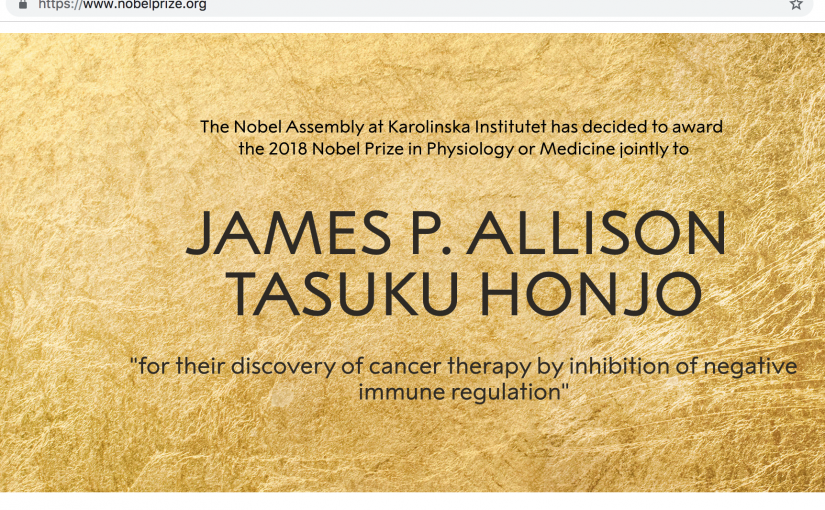This is Nobel Prize week, and it was kicked off in the early hours of this morning with the announcement of James Allison and Tasuku Honjo receiving the award in medicine for advances in cancer immunotherapy. As a scientist, it is amazing to see basic discoveries in the laboratory lead to real impact in patients; it is what fuels my passion for science. Today, cancer immunotherapy has given hope to cancer patients and pushed technology (like CARTs and gene therapy) to new frontiers that will continue to pay dividends for years to come. While the current hot applications of these immunological findings are in cancer immunotherapy, no small part of the early discoveries were in the fields of autoimmunity and infectious disease. Here at ReFigure, I’ve created a collection of two early findings in the Allison and Honjo laboratories along the road to the clinic. See the ReFigure I created here: https://bit.ly/2xQ7cq7
In the first, we see the application of the anti-CTLA4 antibody in a mouse model of melanoma. In this experiment, the anti-tumor effect is shown to be modulated by specific subsets of T cells and is improved upon blocking CTLA-4. I know from my direct experience with this model, that 60% survival at 70 days post challenge is remarkable! Today, patients with anti-CTLA-4 therapy are experiencing durable responses in the clinic. The experiment from Honjo shows early validation of PD-1 as a co-inhibitory signal in lymphocytes. Previous work in that laboratory had shown that an antibody to PD-1 could specifically stain activated T cells. This experiment shows that engaging PD-1 puts the breaks on lymphocyte activation. I know from direct experience with such in vitro assays, getting the concentrations just right to reveal the effect can be challenging (as you can see by the two doses shown). Today, anti-PD-1 therapy has inaugurated a boom for cancer immunotherapy with new discoveries being made every day. Enjoy this kickoff to Nobel prize week and try out ReFigure to re-mix experiments you find interesting!




